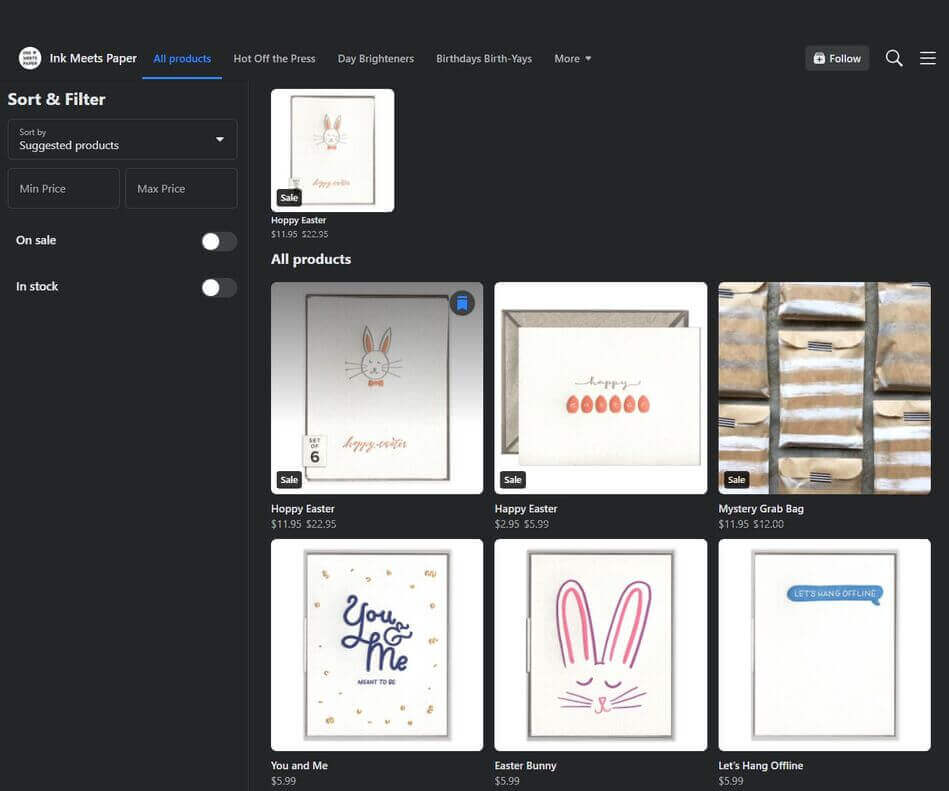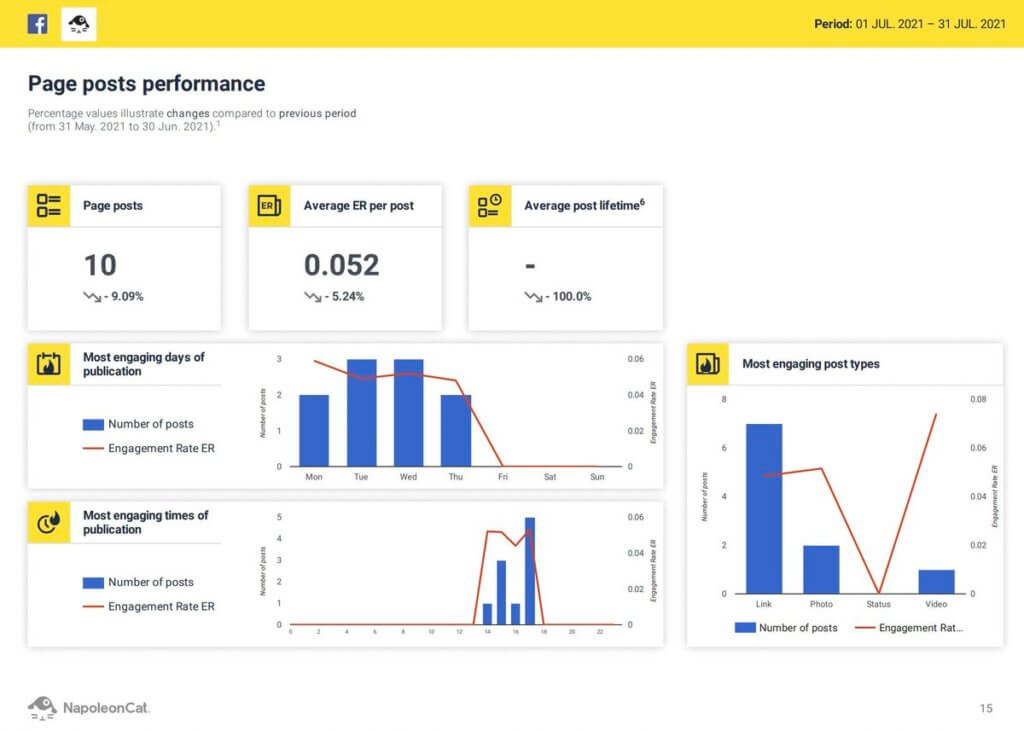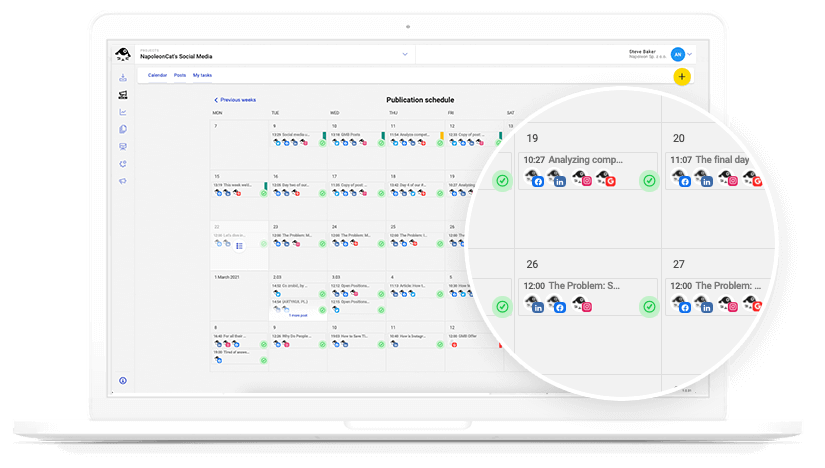Don’t look now, but social commerce is blowing up. According to a recent Accenture Research, sales via social channels will triple by 2025, more than doubling from $492 billion globally in 2021 to $1.2 trillion in 2025.
To get a piece of that big pie, you need to become a social commerce company. If you want to learn more about how social commerce works, you’re in the right place.
In this article, we’ll show you:
- What is social commerce?
- What are the benefits of social commerce?
- The best social commerce platforms to use
- How to achieve success as a social commerce company

Manage all comments and messages from one view
Manage all of your comments, messages, reviews, etc. – with an all-in-one social media tool. Instagram DMs included!
So, what is social commerce again?
Social commerce is the process of buying and selling products (or services) directly on social media networks.
It’s important to mention that social commerce is not social media marketing. Unlike social media marketing, social commerce gives customers the option to make a direct purchase or browse through a catalog of products without leaving the social media platform.
With social commerce, the entire shopping experience, from discovery to browsing to checkout, happens within the social media platform.
Social commerce vs e-commerce
Social commerce is not e-commerce either, but more like a subset of it.
Like e-commerce, social commerce involves selling products and services over the Internet, with the main difference being that potential customers discover, engage, and buy products within the social media platform.
In other words, social commerce not only allows you to meet customers where they are but also showcase and sell your offerings right then and there.
This is a big deal, considering that 43% of Gen Z and 49% of Millennials have purchased directly from social media platforms.
Social commerce shows no signs of slowing down. According to The State of Social Media Investment Report, around eight in 10 brands expect to sell products or services via social media platforms within the next three years. In the U.S. alone, the volume of social commerce sales is expected to reach over $100 million by 2023.
What are the benefits of social commerce?
Here are some of the benefits your business will enjoy by investing in social commerce.
1. It shortens the buyer’s journey
Customers go through a lot of hoops to buy products online. In a traditional online transaction, customers click on a social media ad, get redirected to an e-commerce website, browse through a catalog of products, add the product into their cart, and fill out the payment details before checking out.
With social commerce, customers can go through the whole process in fewer steps and without leaving (mostly) the social media platform. Even better, the entire process is done without interrupting the customer’s social media experience. It’s a convenient way to buy products on the web.
Ink Meets Paper, a company that sells unique cards and stationery, uses Facebook Shops to great effect by showcasing their collection and grouping items into specific categories.

2. It boosts loyalty and retention
Most social commerce features allow you to create your own virtual storefronts, which you can customize to fit your brand. These storefronts also allow you to market and showcase your products in ways that are visually appealing and interactive.
What’s more, customers get to ask questions or provide feedback right then and there, allowing you to address their needs in real-time.

With the above features, you’re able to market your offerings in ways that engage and also improve customers’ perception of your brand, which can have a significant impact on brand loyalty and retention.
3. It boosts conversion rates
Friction often gets in the way of sales.
In fact, a study by the Baynard Institute shows that reducing friction is a $213 billion opportunity for businesses in the U.S. alone. According to a Bizrate Insights study, 56% of social buyers made a purchase via social media by clicking a link to a retailer’s product page, while 44% bought directly via a social media platform.
By eliminating friction in the buying process, you’re not only able to hold your customers’ attention, but you’re also engaging them in ways that increase the likelihood of converted sales.

4. Expands your reach
Social commerce adds a social element to the buying experience. When customers interact with you via likes, comments, or reviews, your engagement metrics get a big boost.
This uptick in engagement sends a signal to the platform’s algorithm that your content is valuable, increasing your brand’s visibility among your target audience.


5. Helps you understand your audience better
Tracking user data is more straightforward when the entire shopping experience happens within a single platform. Why? Because it’s easier to attribute conversions based on previous activity.
Suppose you’re running a promotional deal using a how-to video and it led to high sales. In that case, you can look at the engagement data that led to the conversions and use the insights you’ve extracted to help you refine and optimize your audience targeting in the next campaign.
The best social commerce platforms to use in 2025
At this point, not many social media platforms are offering social commerce features yet. But you can expect that to change as social commerce continues to gain momentum. For now, the following are the best social media platforms for eCommerce to use in 2025.
1. Facebook Shops
Facebook Shops allows businesses to create their own personalized storefront directly on their Facebook Page. Once your online store is up, social media users can browse your products or services by category and make purchases within the platform. Customers can buy from your product catalog without interrupting their social media experience.
Facebook Shops can be customized, allowing you to deliver a branded social shopping experience. Simply go to the Shop Builder, and you can customize the layout and design of your virtual storefront.
You can make it easy for visitors to browse through your product catalog by creating collection pages and organizing your inventory. Potential customers can then discover your collections via their feed, their Facebook shop tab, or a notification inviting them to visit your shop. Your products will be shown to social media users based on their preferences.
2. Instagram Shops
Due to the platform’s visual nature, Instagram Shops delivers a social shopping experience that is truly immersive. It provides brands an excellent opportunity to showcase their products in ways that enhance discovery and boost sales.
With Instagram Shops, businesses can showcase their products or services through regular posts, Stories, the explore tab, and the special shop tab on Instagram profiles. After uploading their Instagram Shop catalog, businesses can tag their products directly when publishing photos, videos, or stories.
If a follower sees that post and finds something they like, they can tap the picture for more information, and then choose among different sizes and colors, before proceeding to checkout.
Just like with Facebook Shops, you can organize your products into groups via Collections, making it easier for shoppers to browse your product catalog, check prices, and learn more about products that strike their fancy.
3. Pinterest
Pinterest stands out as a social commerce platform because Pinterest users go there with a high buying intent.
According to an eMarketer survey, 48% of respondents said shopping was their top social media activity when they visited Pinterest, exceeding the percentages tallied with other social media networks. What’s more, 89% of users visit the website looking for purchase inspiration.
This brings us to Product Pins, a type of rich Pin containing metadata that allows social media users to buy the products they’re viewing in real time. They look like your regular Pins but with additional fields for information on pricing, availability, product title, description, and more.
Pinterest’s new feature Slideshow for Collections takes it to a whole new level by allowing businesses to pull products from a catalog and automatically generate a slideshow featuring products tailored to every shopper.
Is your brand ready to be a social commerce company?
It’s settled – becoming a social commerce company creates promising opportunities to generate more revenue for your company. But how do you become one?

Protect your social media from offensive comments and SPAM
Automatically hide or delete comments containing spam under your organic posts and ads – with an all-in-one social media tool.
Keep your audience engaged
Let’s get this out of the way: Even if you already have a social commerce strategy in place, your main goal in using social media is to get your brand in front of your audience and create genuine connections with them.
Before you start hawking your products to your audience, you need to grab their attention long enough to keep them engaged.
You can provide your audience with the most seamless social shopping experience in the social media platform of their choice, but if you’re not doing your part to make your content relevant and engaging to that specific audience, they’re not buying.
Don’t just create content. Start conversations by asking the right questions. And more importantly, listen to what your audience has to say. It helps you understand your audience better, which can help you refine your audience targeting and boost conversions.
NapoleonCat’s Social Inbox helps you keep your audience engaged by giving you the tools to become a more responsive, customer-facing brand.
Social Inbox helps you keep track of all messages and comments using one simple (and customizable) dashboard, cutting down response times by 66%.

Do you have more social media accounts and customers than your team can handle? Let social media automation do the dirty work for you.
NapoleonCat’s Auto-moderation feature lets you automate your social customer service, so you can focus on bigger tasks that require a more human touch.
The tool can help you:
- Set up automated replies to common questions on FB and IG (ad posts included)
- Automatically hide or delete inappropriate comments, spam, etc.
Keep digging for customer data
Don’t rely on guesswork alone if you want your marketing outreach to resonate with your audience.
Gather as much data as you can about your target audience. To get a fuller picture of your target audience, collect both qualitative and quantitative data and then use the insights to create and enrich your buyer personas.
Once you have detailed buyer personas, you’ll find it easier to tailor your content, messaging, and products to meet your audience’s specific needs, behaviors, and objections. You can also use the customer insights to customize and refine your virtual storefronts and social commerce initiatives so that they engage and convert better.
To extract practical and actionable insights from customer data, you can use NapoleonCat’s Analytics and Reports to not only analyze your own accounts but also track competitors on social media.
The tool lets you track engagement rates, reach, hashtags, etc. You’ll know at a glance how well your social media outreach is performing and what specific steps you can do to perform better.

You can easily report your wins by scheduling automated weekly and monthly reports and sending them to your boss or clients.
Schedule your social media content
Creating content is like producing a weekly (or daily) TV program. If you publish consistently, your audience will start anticipating your content, and by extension, your product catalog.
But publishing consistently can be tricky, especially if you have a limited budget and resources.
By setting up a schedule for each post or update in advance, you can manage and group your tasks into batches, allowing you to stay on schedule with every content you publish.
Of course, having a social media scheduler tool helps. With NapoleonCat, you can plan and publish social media content to Facebook, Instagram, Twitter, LinkedIn, and Google My Business using one convenient dashboard.
The tool also has defined parameters that allow you to tailor each piece of content for each platform.
Scheduling a social media post to multiple platforms at once.
You can use the tool’s social media calendar to pick out the best times to post based on your social commerce campaign goals. Simply pick the date, the platform where you want to publish the content, and then add the content. You can publish it immediately or schedule it at a later date.

Wrap up
As social commerce continues to grow, businesses are presented with an excellent opportunity to connect with their audience in ways that get to the heart of the buying experience. If you want to reap the rewards in the future, start planning a social commerce strategy and find out what will work for your brand.

Social media marketing made easier
Manage all your social media accounts with an all-in-one social media tool. Automate repetitive tasks, reports, and more.
You may also like:





